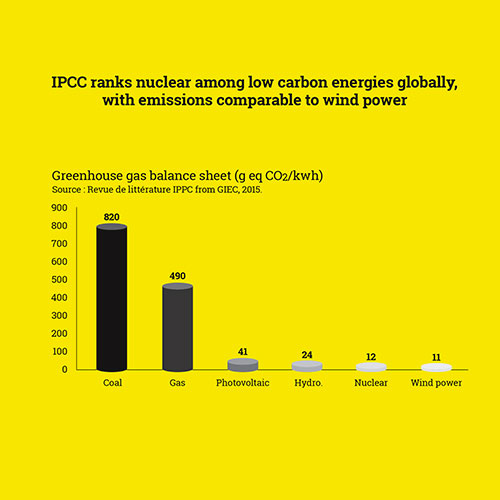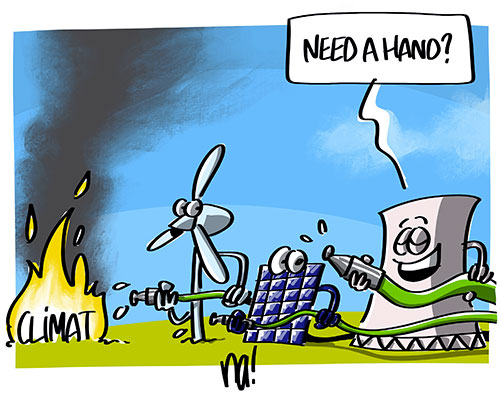
All about France's Multi-Year Energy Program (PPE)

Nuclear energy: a competitive, low-carbon energy source capable of supplying safe and plentiful electricity
Thanks to nuclear and hydro energy, France has already attained a level of low-carbon electricity supply of over 95%. It is the industrialized country with the lowest CO2 emitted per capita (4.6 tons per inhabitant, almost half the German level). France is among the six countries to have already achieved the IPCC1 target for decarbonizing their electricity by 2050.
1 Intergovernmental Panel on Climate Change

At the global level, nuclear power is the main source of low-carbon electricity (40% of low-carbon production), with nuclear powerplants currently in operation effectively making it possible to avoid the equivalent in CO2 production terms of 400 million cars each year.

Conclusions of the recent IPCC report published in October by 90 researchers from 40 countries are along the same lines: it is essential to limit global warming to 1.5°C if we are to remain in a viable world, whereas CO2 emissions are on the rise again. The IPCC has defined four scenarios in which it is possible to stay below this threshold: in all four scenarios, while nuclear is not the only solution, it certainly remains an essential component. If the current trend continues, compliance with climate objectives will require a six-fold increase in global nuclear capacity.
In France, nuclear power remains the principal platform for electricity production
The challenge for our country going forward is to sustain electricity production that is at once low-carbon and competitive (€ 33 per MWh, half as expensive as in Germany for households) and capable of continuously delivering the energy we need for transportation and for heat and light for our homes and workplaces.In this context, nuclear energy - the third largest industrial sector in France employing more than 220,000 people - will continue to provide 50% of baseload electricity in 2035.
The French President has announced the goal of reaching a threshold of 50% nuclear in 2035, which supposes the closure of 12 reactors by 2035 (not including Fessenheim), with 4 to 6 closures by 2030, and the remainder between 2030 and 2035, it being underlined that this is a trajectory that may be reviewed depending on factors including actual reductions in CO2 emissions, electricity price trends and security of supply.
The President has asked EDF to devise a program, by 2021, for the development of new nuclear capacity, specifying that the EPR is a part of the technology mix for tomorrow.
The reprocessing and recycling route confirmed for used fuel management
Concerning the fuel cycle, and more specifically recycling, the Ministry for Ecological and Inclusive Transition has confirmed the choice of reprocessing and recycling for used fuel management. Recycling makes it possible to reduce the volume of the most radioactive waste by a factor of 5 and to manage it safely. It contributes to the economy of raw materials: in France, 10% of nuclear electricity comes from MOX, a new fuel made from recycled materials.

The use of MOX fuel will soon be tested in new reactors. Currently at EDF, only 900 MW reactors use MOX. A program for the moxing of 1300 MW reactors will be set up, with the agreement of the government and EDF.
Orano will continue to invest in its industrial platforms located in France: more than 300 million euros of investments per year. This is in order to provide the materials necessary for electricity production and to allow recycling and good waste management. The Orano plants are located in France, they contribute to the development of French industry (more than 10,000 direct and indirect skilled jobs) and to the positive balance of nuclear energy for the trade balance (+ €6 billion). These investments will also help to maintain skills in France.